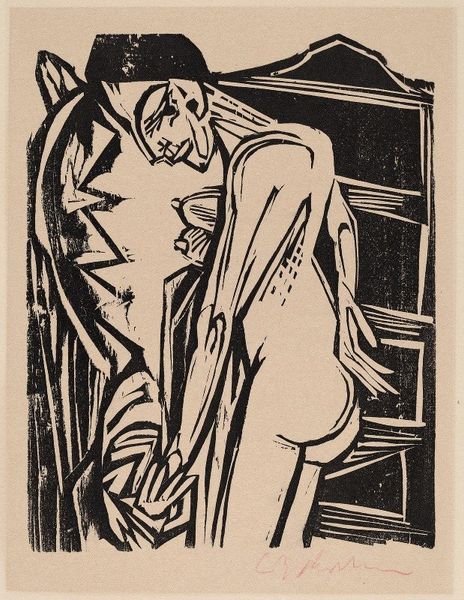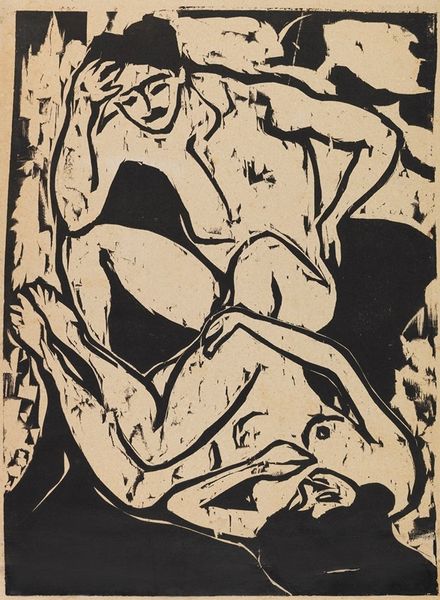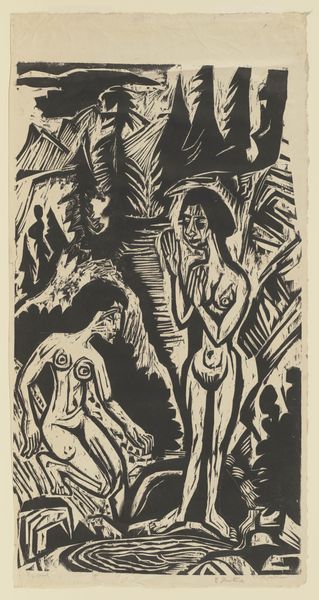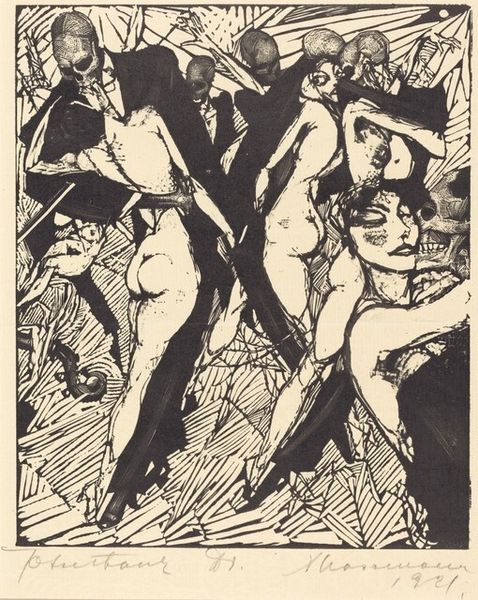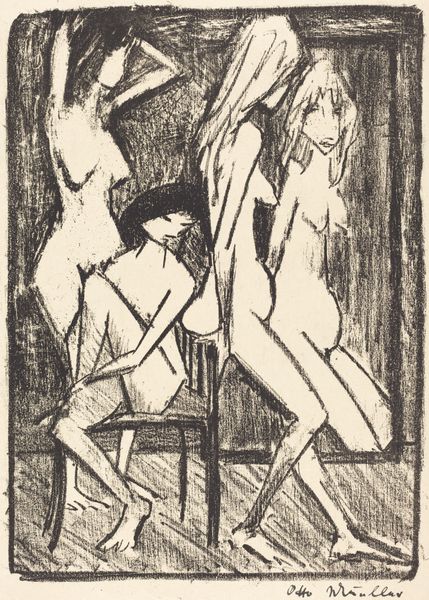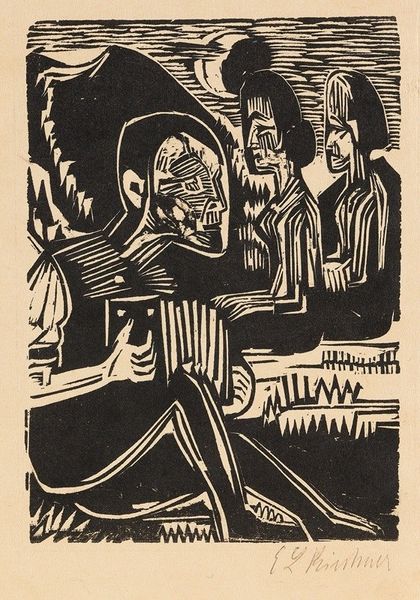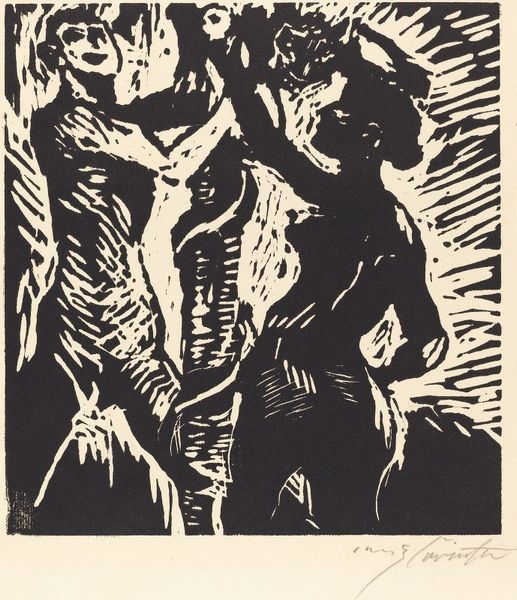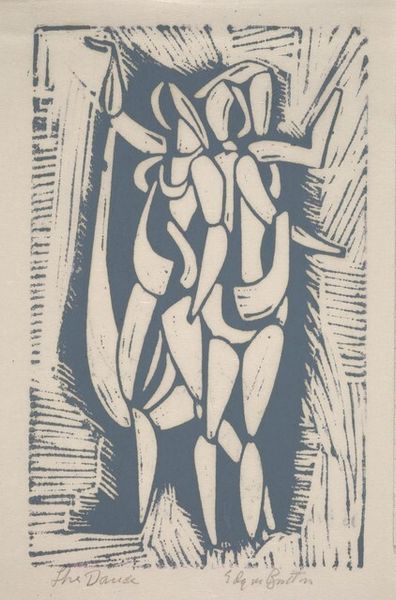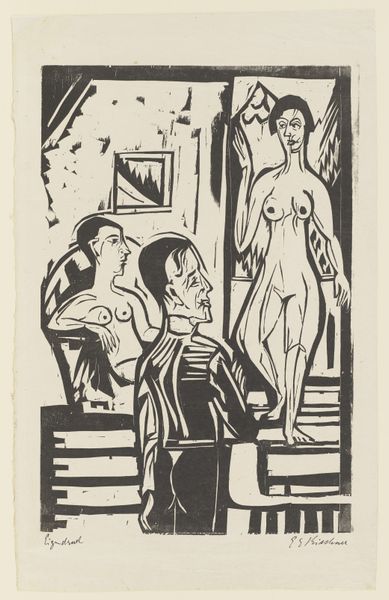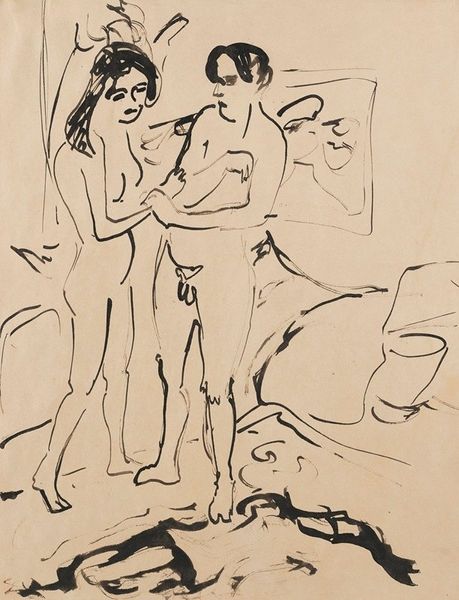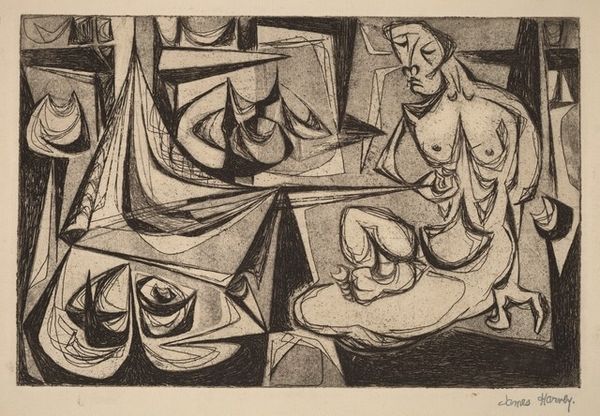
drawing, print, woodcut
#
drawing
# print
#
german-expressionism
#
figuration
#
expressionism
#
woodcut
#
nude
Copyright: Public Domain: Artvee
Curator: Here we have "Die Entscheidung," or "The Decision," a 1926 woodcut print by Ernst Ludwig Kirchner, a leading figure in German Expressionism. Editor: My first thought is how stark the composition feels. The sharp contrast between the black ink and the cream-colored paper, along with the angular forms, gives it an almost brutal quality. Curator: Indeed. Kirchner often employed woodcuts to explore themes of alienation and societal fragmentation in the Weimar Republic. This particular piece raises many questions around gender dynamics and choice. The central figure, a woman partially draped, seems flanked by two male figures—one a bourgeois man in a suit, the other an ambiguous form shrouded by what might be a hat or a dark shadow. Editor: I'm struck by the central female figure. The distorted proportions, particularly the elongated neck and stylized face, lend her an almost mask-like quality. And that small, pursed mouth! What is that supposed to indicate, that this person doesn't get to speak? It appears passive and maybe hesitant? Curator: One could interpret the woman's positioning and almost skeletal frame, common to the Expressionists of that era, as commentary on the societal pressures and moral judgement on women’s bodies at the time. In this era between wars in Germany, it seems like this reflects upon what the expectation from different kind of masculinities means. How this woman must choose what man represents her desire and therefore her role. Editor: You mention "decision," and that makes me think. Is the shrouded figure meant to symbolize death? He does play an instrument. Is she choosing to dance, like, to play along in the dark or will she choose a future represented in light with the man on the right? The flute-player motif goes back so far and takes many forms, the Pied Piper being only one dark instance of it. Curator: It is true. Kirchner used to focus on portraying the dark side of that music as well. And the recurring image of the flautist is more common in his art than perhaps initially assumed. Viewing it this way could also point toward what we might call a 'dance of death'. Editor: It is definitely something that can be felt throughout. A sense of doom lurking beneath. It’s a potent reminder of how much can be communicated through stark imagery and a seemingly simple medium like a woodcut. Curator: Absolutely. Looking at “Die Entscheidung” really encapsulates Kirchner's ability to capture a mood and feeling.
Comments
No comments
Be the first to comment and join the conversation on the ultimate creative platform.
